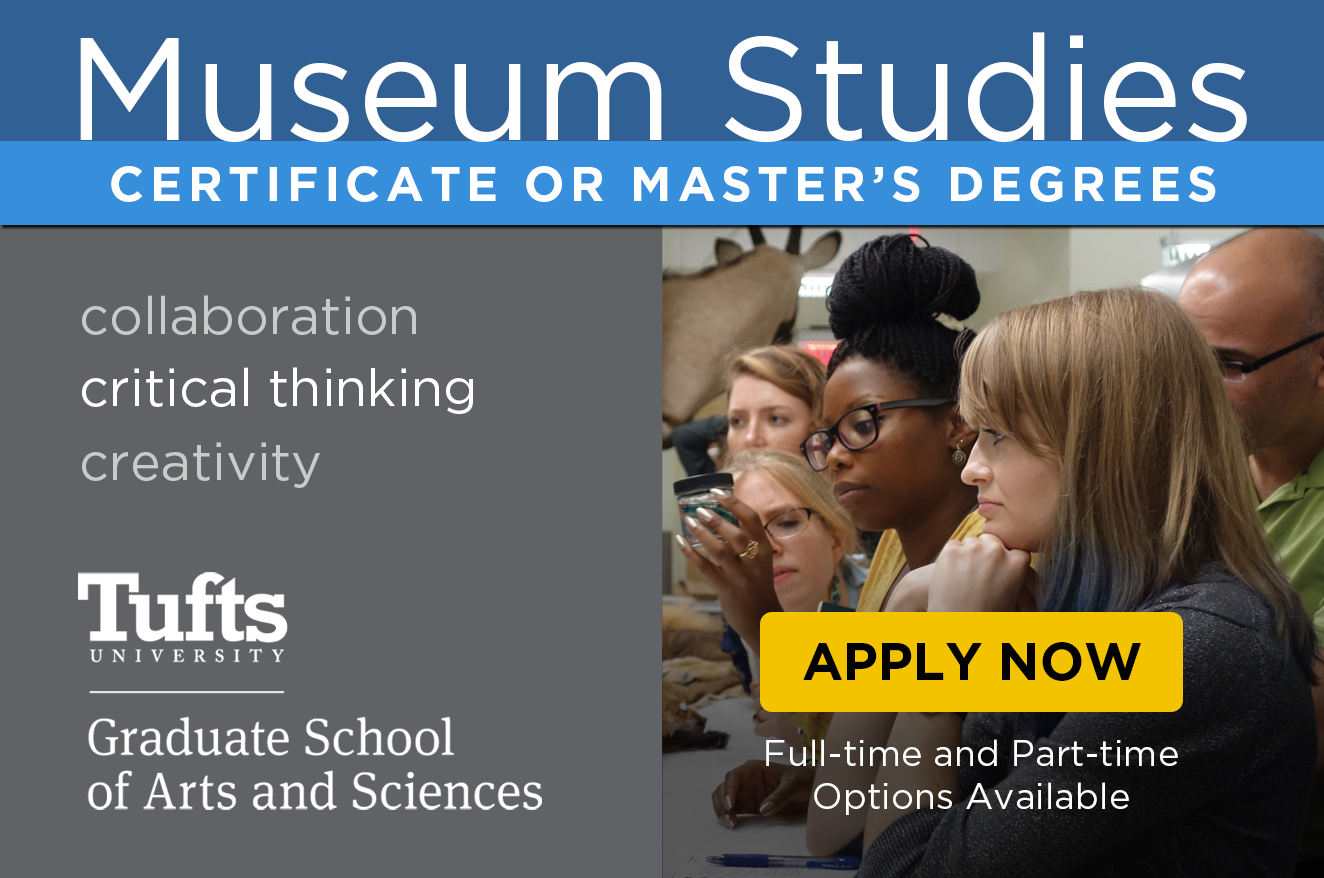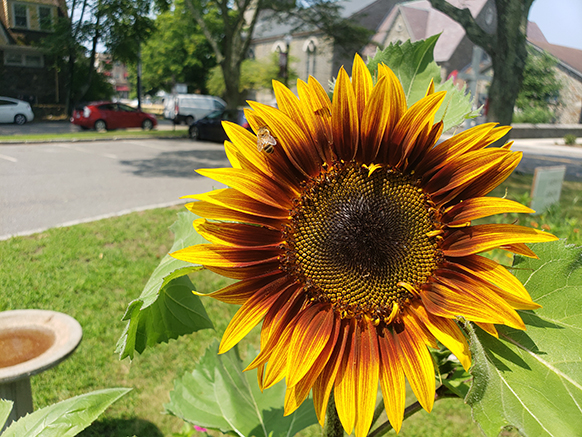
Growing Local History: The OCHM Garden
By Katie MacDonald, Director, Old Colony History Museum
Major threat to public health and safety. Widespread displacement and disenfranchisement. Catastrophe.
Whether describing the current state of our climate or the non-profit museum field of the past 18 months, the potential to be swept up in anxiety and doom-scrolling is far too real these days. Often it feels like, as individuals, there is not much we can do about it. At the Old Colony History Museum, as we closed our doors in March of 2020 our mantra was that we would “open up better.” Perhaps full of more optimism than we felt, our team truism didn’t guarantee that people would be able to, or even want to, visit our small local history museum. But we needed to throw ourselves into some projects that offered some hope and optimism in a gloomy world. One of the ways we did so was with our spring exhibit, still going strong now in Fall 2021, Growing Local History: The OCHM Garden.
For those who may not know it, the Old Colony History Museum (OCHM) is located in Taunton, Massachusetts and has been in existence since 1853. A traditional New England historical organization, the OCHM collected and lectured for its first 120+ years. The collections grew, research was published, and speakers presented, and then in the 1980s the first professional staff was hired. A once bustling industrial city grappled with change in a post-industrial world, and its local history organization faced the challenges that followed suit.
In 2014 the team, much changed in recent years, gathered to set a new course for the organization. Among the many changes codified in a five-year strategic plan, perhaps the most prominent was the addition to our mission of a “vigorous program of outreach and education.” This commitment altered our staffing, our public image, and our attitude. We created a field trip program, and, starting in 2016, developed, tested, and presented a new experience for a new grade of the Taunton Public Schools every year until we saw all of the 2nd, 4th, and 7th graders by 2019. In addition, our four-person, full-time staff re-interpreted our galleries, increased the ease of touring our space, and enhanced the safety and security of our building. We surveyed the public and adjusted our programming to meet a growing and diverse set of needs. We increased our free public programming by 169% from 2016 to 2019 and as a result saw an increase in visitors, members, and donations. As we entered the final year of our strategic plan, we were ready to ride the wave of success that we had been working towards for the past 5 years. All of the trials and errors, growth and change, starts, stops, and redirects, had led us to 2020: the year it would all come together to prove that our staid history organization could re-invent itself.
As you know, that didn’t happen, or, at least, not the way we thought it would. We closed our doors on March 17, 2020. When we re-opened in July, we, like all of you, were in a different world. We did another, quick re-invention, made possible only because we had grown to be pretty good at re-invention and benefit from an impressively committed staff and board. We created Zoom programs and Google classroom field trips. Our building’s square footage counted us among the lucky museum staff that could go back to our building as long as we kept the cleaning up and the number of people in the building down.
Goodwill and people willing to adhere to safety guidelines got us back in action the first months of re-opening. We had previous experience with outdoor programs (walking tours and cemetery tours) and we had recently bought a tent so that indoor programs could become outdoor programs while the weather was kind to us. We didn’t see our summer tourist bump, and we were doing more online than in person, of course. We kept thinking about big museum questions. How does a museum measure value if it isn’t in attendance dollars and donations? What is effective engagement if a program is done remotely? How do we teach history without being able to share objects and documents in all the new and exciting ways we had developed recently? What can we offer a community that needs connection but also needs to stay apart? In what ways can we make a positive impact in a world faced with so many challenges?
Our answer to these questions came in the form of 3 yards of soil, a variety of seed packets, and our old miniature golf course. (Yes, we had made a miniature golf course on our front lawn in 2016. Reinvention!) What we decided to do was make an exhibit on our front lawn. We did it by treating the yard like a gallery, raised beds like exhibit cases, and the plants we grew in the beds as the objects we wanted to share with the public. And from there we proceeded as normal exhibit prep proceeds—we researched native plants, what has been grown locally throughout history, what different plants have been used for, and what contemporary challenges our native ecosystem is facing.
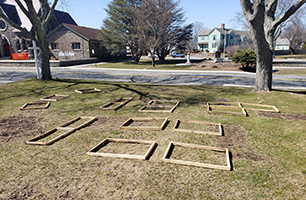
Bed Layout, March 2021
We tied our programming to the exhibit and read books on pollinators in our monthly kids’ story time, crafted bee houses during Crafternoons, and gave guided tours of the garden throughout the summer. Our fall lecture series will bring in speakers from Bee Informed, the Massachusetts Horticultural Society, Edible South Coast and South Shore, and the Grounded Goodwife to learn more about bees, plants, cooking, and herbalism.
The OCHM Garden opened in a world of uncertainty. As we enter late summer and the growing season begins to slow, we are evaluating this project to see if it met out four specific goals we had set out at the beginning.
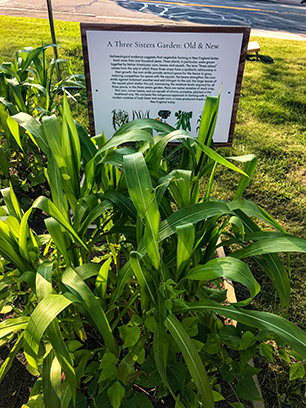
Three Sisters Bed, July 2021
Teach local history.
This exhibit examines a selection of plant life that make up the unique landscape of the Old Colony. We have vegetable crops which were an important economic driver following European settlement; herbs used in cooking but also for their medicinal properties by both the indigenous population and herbalists of the past and today; and native wildflowers to attract pollinators which are fundamental to our ecosystem. Teaching local history is always our primary goal and the reason we do all of the things that we do, pandemic or not. What was immensely satisfying with this exhibit was that we were able to reach people we maybe wouldn’t have otherwise. We will admit, begrudgingly, that not everyone out there wants to spend time at local history museums. But so many people stopped and look at the garden, and many said it was the reason that brought them in. We even learned that our mailman loves to grow tomatoes!

Tomatoes, August 2021
Offer a safe space, free, and open to all.
When planning for our spring exhibit, before we knew what it would be, we were especially mindful of offering an experience for as many people in our local community as possible. It is outside, in fresh air, and as safe as anything on-site that we could have imagined. There is no admission to tour the garden. It is for our researchers with appointments just as much as it is for anyone who may just be passing by. There is a bench to sit and stay to enjoy for as long as you would like. The garden does not adhere to our regular hours even. It is there, for all, all spring, summer, and fall. If you do come in, we are even giving away wildflower seed paper so that anyone who visits can start their own garden and continue the experience themselves. Of course, we hope that by coming to the museum visitors will want to come inside. But we know that many people are having a difficult time, and when we committed to meeting the needs of our community we committed to do that in whatever ways we felt we could contribute.
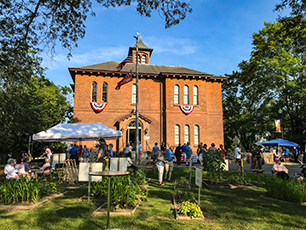
OCHM Garden Party, July 2021
Learn new skills.
In addition to our cold stratification and seed starting crash course that allowed this project to happen, our team learned a lot of new skills with this exhibit that will serve us well into the future. Thanks to a Digital Capacity Grant from Mass Humanities and support from the Taunton Cultural Council, we have been able to greatly expand the ways in which we are presenting this exhibit. There is an in-person experience to view the garden, which will expand this fall to include relevant lectures. We are going to present these lectures both in person and on Zoom, which greatly expands our audience. We have been learning about social media engagement and content creation so as to be able to bring more varied presentations to people in the future. And we developed a companion online exhibit so that the garden can reach as far as the internet will take it. This has allowed us to share longer articles documenting our process and even try our hand at creating videos (have you seen our YouTube channel yet?). We don’t claim to be experts at any or all of this, but we are certainly excited by the new possibilities that it opens to us. We strive to present information to people of all interest levels, backgrounds, and learning styles and this is a constant and evolving process for us. The support to be able to grow and try to new things, especially at a time of so many unknowns has been invaluable. It makes us excited to see what the future holds!
Connect to the larger world and to important issues.
While we tend to focus locally at the OCHM, the COVID-19 pandemic was a stark reminder of how connected we all are on this planet. The garden exhibit is an opportunity to care for our local plot of earth and also discuss important climate issues that affect us all. Pollinators are in trouble. Since 1947 there has been a 60% drop in bee populations in Eastern North America due to climate change, pesticide use, and environmental loss. Bees and other animal pollinators (birds, bats, butterflies, moths, and insects) are crucial to our survival as more than 75% the world’s food depends on pollinators. We have moved away from locally-produced foods and market gardens—not that long ago Taunton had more than a dozen grocery stores in business at the same time—but perhaps a more local approach to food could benefit our local pollinators, and ultimately, all of us. We don’t try to solve all of these problems, but we do try to start conversations about them. If only a few people learn about native plants and try to add some areas in their yard for pollinators, then we will have done our job.
Our climates are changing, both globally and in the day-to-day work of museums. We have found solace in 60 square feet of experimentation, sweat, work, fun, learning, failing, food, flowers, and enjoyment. You can learn in greater detail and see how things have progressed online. It has been one of the most successful projects we have undertaken here in recent years, and I encourage anyone who is interested to try it yourself in your own space. After more than a year of change, challenges, trials, and growth, The OCHM Garden is achieving the goals that we set for it, and it sure is nice to be growing local history again.
